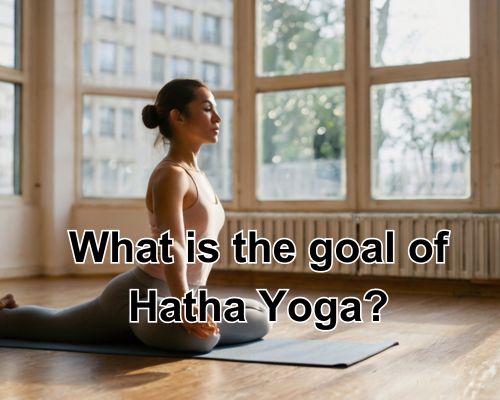Alternative Infrared Sauna Therapy for Detox, Recovery, and Wellness
Alternative Infrared Sauna Therapy for Detox, Recovery, and Wellness
Alternative infrared sauna therapy is a growing wellness trend that taps into the power of light-based heat to support the body’s natural functions. Unlike traditional saunas, which heat the air around you, infrared saunas use infrared light to directly warm the body, promoting a deeper, more penetrating heat experience. This method is frequently used in natural health circles for detoxification, pain relief, skin health, and stress reduction.
How Infrared Sauna Therapy Works
Infrared light falls on the spectrum just beyond visible light. When absorbed by the body, this light creates heat at a cellular level. The three types of infrared waves—near, mid, and far—each penetrate the skin at different depths:
- Near-infrared focuses on skin rejuvenation and wound healing
- Mid-infrared targets soft tissue, joints, and muscles
- Far-infrared penetrates deepest, encouraging detoxification and improved circulation
Sessions typically last 20 to 40 minutes at temperatures ranging from 110°F to 140°F, making them more tolerable than traditional dry saunas.
Detoxification Through Sweat
One of the most noted effects of alternative infrared sauna therapy is its support for detoxification. As the body heats up, it produces a deep, purifying sweat that helps release toxins stored in fat cells. These may include:
- Heavy metals like mercury and lead
- Environmental chemicals such as BPA and phthalates
- Residual pharmaceuticals or alcohol
Sweating in this way may relieve the toxic burden on the liver and kidneys, offering a passive but effective tool for systemic cleansing.
Support for Chronic Pain and Inflammation
Individuals living with joint pain, stiffness, or muscle soreness often turn to alternative infrared sauna therapy for relief. The deep heat improves circulation, delivering more oxygen and nutrients to inflamed tissues.
Common conditions that may respond to regular sessions include:
- Rheumatoid arthritis
- Fibromyalgia
- Chronic fatigue syndrome
- Post-exercise muscle recovery
Far-infrared heat encourages the dilation of blood vessels, which can help reduce inflammation and stiffness without the need for medication.
Enhanced Circulation and Cardiovascular Support
Infrared sauna therapy has been shown to mildly elevate heart rate, mimicking the effects of light cardiovascular exercise. This passive workout effect may benefit those who are sedentary, recovering from illness, or managing heart disease risk.
Studies suggest that regular use can:
- Improve endothelial function
- Lower resting blood pressure
- Boost nitric oxide production
- Promote healthier blood flow
This makes it a valuable addition to a heart-friendly lifestyle that includes diet, hydration, and movement.
Skin Health and Cellular Regeneration
Alternative infrared sauna therapy also supports skin clarity and rejuvenation. By increasing circulation and promoting sweating, it can:
- Clear clogged pores
- Improve acne-prone skin
- Stimulate collagen production
- Promote faster skin cell turnover
Near-infrared wavelengths are particularly useful for targeting the surface layers of the skin, supporting elasticity and wound healing.
Stress Reduction and Sleep Support
The soothing warmth of an infrared sauna calms the nervous system. Heat therapy reduces levels of cortisol (the stress hormone) while increasing endorphins, producing a relaxed, almost meditative state.
Regular sessions may also:
- Improve sleep onset and quality
- Calm anxiety
- Reduce physical tension
- Support adrenal balance
Unlike stimulant-based therapies, this approach works with the parasympathetic nervous system, encouraging deep rest and recovery.
Athletic Recovery and Performance Benefits
For athletes and active individuals, alternative infrared sauna therapy offers several performance-supportive effects. It encourages muscle relaxation and improves lactic acid breakdown, which can:
- Reduce post-workout soreness
- Shorten recovery time
- Prevent overuse injuries
- Support joint mobility
Some protocols alternate infrared heat with cold exposure (contrast therapy) to maximize performance gains and reduce inflammation.
Integration With Holistic Therapies
Infrared sauna therapy is often used in conjunction with other natural health practices. It’s commonly paired with:
- Lymphatic massage
- Acupuncture
- Nutritional detox programs
- Chiropractic adjustments
- Functional medicine regimens
It also complements cleansing diets, intermittent fasting, and herbal supplementation designed to improve liver, kidney, and skin function.
What to Expect From a Session
Before entering an infrared sauna, users are advised to hydrate well. Most sessions begin with low intensity and gradually increase as tolerance builds. Many saunas feature chromotherapy (color light therapy), Bluetooth sound systems, or meditation music to enhance the overall experience.
Afterward, it’s important to rest, replenish electrolytes, and shower to remove toxins released through the skin.
